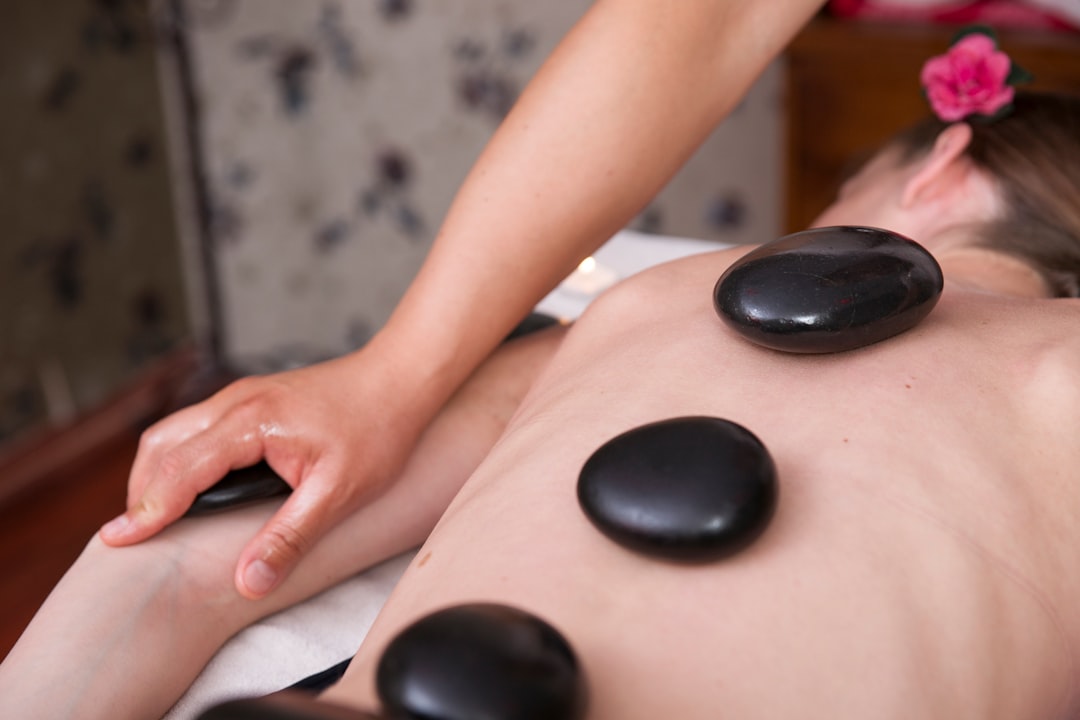

Engage prospects with a scan and streamline customer engagement with FREE QR code marketing tools by Sona – no strings attached!
Create a Free QR CodeFree consultation

No commitment

Engage prospects with a scan and streamline customer engagement with FREE QR code marketing tools by Sona – no strings attached!
Create a Free QR CodeFree consultation

No commitment
In today’s digitally driven world, clients expect seamless experiences that connect in-person touchpoints with convenient online actions. Massage therapy practices are no exception, and many are reevaluating how they capture interest, convert it to bookings, and sustain engagement between sessions. QR codes are a strategic way to bridge physical environments with digital journeys, transforming static print materials and in-studio moments into measurable, conversion-ready experiences.
By placing scannable calls to action where clients already are, you can invite rebookings, capture feedback, streamline intake, and enroll clients into loyalty programs without friction. The result is a tighter loop between intent and action, more complete data in your CRM, and a reliable system for nurturing clients toward repeat visits and higher lifetime value.

Successful massage therapy marketing requires adapting analog processes to digital-first client expectations. The most common drop-off points occur when clients are asked to remember to act later, fill out paper forms, or carry punch cards that are easily misplaced. QR codes close those gaps by letting clients act in the moment: while they feel the positive effects of a session, while they are near signage, or while they are holding your brochure. Shortening the distance between intent and action is the simplest way to increase rebookings and improve retention.
A digital-first approach also frees your team to focus on client care. When intake forms, rebooking prompts, and review requests are automated through QR experiences, front desk staff no longer carry the full weight of follow-up. This consistency is especially valuable during busy periods or staff changes, ensuring that high-intent signals are captured and acted upon without manual effort.
Example: Instead of relying on the front desk to chase rebookings, place branded QR displays in each treatment room and at the checkout counter. Clients can scan to rebook while the experience is fresh, complete a quick post-session survey, or join a tailored wellness plan. Practices that do this reduce friction, raise retention, and convert everyday interactions into measurable, automated engagement.

Massage therapy practices often struggle with incomplete data about who is engaging and why. People see your menu, pick up a brochure from a partner gym, or notice a poster in your window, yet many do not make a booking or leave their information. These moments go unmeasured and unaddressed, creating blind spots that hurt marketing efficiency and retention.
QR codes turn each of those moments into a measurable step. When a client scans, you capture intent signals, track context like location and time, and route them into a targeted action such as booking, feedback, or loyalty enrollment. This reduces wasted spend on generic campaigns and builds a connected journey that is easier to optimize over time.
In short, QR codes help you see the full path from first glance to second visit. That visibility lets you fine-tune offers, elevate service, and build durable client relationships.

A QR code is only as effective as the experience it unlocks. For massage therapy clinics, formats that drive rebooking, reduce administrative friction, and support loyalty are most valuable. Matching the format to the use case ensures you capture relevant data and move clients toward meaningful outcomes.
Dynamic QR codes are especially powerful in this vertical because they allow you to modify destinations as promotions change. They also support analytics, A/B testing, and segmentation. Static QR codes can work for permanent resources such as Wi-Fi access, but they limit tracking and flexibility.
With a centralized platform like Sona QR, you can generate, update, and track all of these formats from one dashboard, ensuring every scan adds to a coherent picture of client engagement.
Growth often hides in familiar places. The materials and moments you already own can become high-performing conversion points once they include scannable, benefit-driven calls to action. The key is to identify where clients pause, consider options, or feel motivated to take the next step.
Walk through your client journey from first impression to post-session care and mark each point where a QR code could remove friction. Prioritize high-traffic surfaces and high-intent moments such as after-session reflections or while waiting at checkout. These are ideal times to convert interest into measurable action.
By mapping and instrumenting these touchpoints, you enrich every offline engagement with digital follow-through that leads to higher retention and growth.

Beyond convenience, QR codes solve several entrenched problems: they reduce anonymous traffic, prevent lost follow-up, and convert idle moments into high-value actions. The strongest use cases advance a client through the next step of their journey while recording context for future personalization.
When selecting use cases, prioritize those that directly support business goals such as rebooking rates, review volume, or loyalty adoption. Align each QR destination with a clear conversion path and a measurable outcome.
Each use case upgrades a routine interaction into a conversion moment. Over time, the combined lift from these micro-conversions compounds into improved retention, higher average spend, and more predictable repeat bookings.
Every QR scan is a meaningful signal. It captures what a client was interested in, where they were, and when they engaged. With the right setup, these signals automatically segment your audience, allowing you to tailor follow-up and advertising with precision.
A multi-code strategy helps you identify client intent by journey stage. For instance, a "Scan to Learn About Deep Tissue vs. Sports Massage" indicates research, while "Scan to Rebook Now" reflects conversion-ready interest. Feeding these distinctions into your CRM or ad platforms unlocks smarter automations and higher ROI.
In massage therapy, audience distinctions can include new clients versus returning, sports recovery versus relaxation seekers, or weekday versus weekend visitors. These insights support targeted campaigns that respect preferences and maximize relevance.
Many clinics run solid individual campaigns but struggle to connect them into a cohesive journey. QR codes act as a thread that ties print, in-person, and digital channels together, creating a single flow where context, messaging, and data are aligned.
A connected approach ensures that what you promote on a poster is reinforced by your emails, that social content links to the same rebooking pathways, and that in-studio signage offers next steps relevant to client preferences. Centralized QR data provides a shared source of truth for continuous improvement across teams.
With Sona QR, you can manage codes across all channels, monitor performance, and synchronize scan events with your CRM. This centralization turns scattered activities into a coordinated growth system.
Reliable execution is about designing for action, deploying where intent is highest, and measuring outcomes so you can iterate. Treat each QR initiative as a miniature funnel: prompt the scan, capture the signal, deliver value, and follow up.
Before you begin, identify the single business result you want to influence, such as rebooking rates or review volume. Then choose placements and messaging that align with that goal. This focus keeps your deployment clear and your analytics meaningful.
Clarify the outcome you want from the campaign. For retention, you might prioritize "Scan to Rebook," loyalty enrollments, or post-session feedback. For acquisition, focus on partner brochures or event signage that route prospects to a welcome offer.
Choose between static and dynamic codes based on flexibility and tracking needs. Most retention and acquisition campaigns perform best with dynamic QR codes because they allow updates and provide analytics.
Design influences scan rates. Use contrast, whitespace, and a clear frame. Add a benefit-led call to action near the code, not just your logo.
Place codes where attention and intent are naturally high. Treatment rooms, checkout counters, and partner venues are powerful locations.
Make data your feedback loop. Review scan trends by location and time, then test improvements systematically.

Attribution in local services can be tricky, particularly when part of the journey takes place in physical spaces. QR analytics help you connect in-studio actions and print engagement with measurable outcomes like bookings and revenue. This transparency turns guesswork into a performance discipline.
The key is to capture context at the moment of the scan and link it to downstream events. When your analytics platform is tied to your CRM and booking system, you can see which surfaces drive appointments, which offers resonate, and which segments respond to reactivation attempts. That clarity unlocks smarter budget allocation and better client experiences.
Start creating QR codes for free.
Scaling QR initiatives requires discipline and creativity. Treat codes as living assets that evolve with your offers, seasons, and client insights. The most successful programs combine consistent placement with ongoing testing and integrated follow-up.
Make it easy for clients to understand the why. A QR code without a benefit is just a pattern. Clear copy, visible value, and staff reinforcement are the difference between a glance and a scan.
These best practices create a feedback loop that surfaces what works in your unique environment and client base, helping you refine offers and messaging for maximum impact.
Client trust is the foundation of any wellness business. Your QR workflows should reflect the same care and professionalism you bring to hands-on services. Transparent data practices and accessible design are not only ethical; they also increase client willingness to engage.
Privacy standards vary by region and system, so ensure your data collection complies with relevant regulations. Keep consent clear, use secure forms, and limit data capture to essentials. A respectful approach will strengthen long-term relationships and reduce legal risk.
Ethical, inclusive design does more than keep you compliant. It builds the trust needed for clients to opt in to continued communication and loyalty participation.
Massage therapy is embracing a digital-first mindset as clients seek convenience, personalization, and touch-free options. Post-pandemic habits have normalized scanning for menus, payments, and check-ins, which raises the bar for what clients expect in a wellness environment. See practical massage therapy marketing strategies for additional ideas.
The most effective teams treat QR engagement as the starting point for a tailored relationship. They use scan data to segment audiences by needs such as sports recovery, prenatal support, or stress relief, then align offers and content accordingly. This precision increases client satisfaction and drives higher repeat rates.
QR codes elevate massage therapy practices beyond paper-heavy workflows into data-driven engagement that respects clients’ time and preferences. By modernizing how you capture and respond to intent, you unlock sustainable growth through higher retention and smarter marketing operations.
QR codes have transformed massage therapy practices from simple appointment reminders into powerful tools for client retention and engagement. Whether it’s streamlining client check-ins, sharing personalized aftercare tips, or promoting loyalty programs, QR codes replace cumbersome manual processes with instant, mobile-friendly interactions that deepen client relationships and boost repeat visits. Imagine knowing exactly which touchpoints encourage clients to book their next session or refer a friend—and acting on that insight immediately.
With Sona QR, you can create dynamic, trackable QR codes in seconds, update your campaigns without reprinting, and link every scan directly to your retention goals. No wasted effort, no missed opportunities—just smarter, more effective ways to keep your massage therapy clients coming back. Start for free with Sona QR today and turn every scan into a lasting connection.
You can use QR codes to bridge physical touchpoints with digital actions by placing them on brochures, appointment cards, signage, and business cards to invite rebookings, capture feedback, streamline intake, and enroll clients into loyalty programs, which increases retention and engagement.
Effective marketing ideas include embedding QR codes on printed materials and in-studio displays with clear calls to action like Scan to Rebook or Scan for Members-Only Pricing, using dynamic QR codes for flexible promotions, partnering with local gyms or wellness centers to share QR-linked brochures, and integrating QR campaigns with CRM for personalized follow-ups.
You can generate a vCard QR code that lets clients save your contact details with one scan, reducing missed calls and misplaced cards; this can be done using centralized platforms like Sona QR that allow you to create, update, and track QR codes from one dashboard.
Innovative ways include using QR codes for digital intake forms, post-session feedback surveys, digital loyalty programs, offering guest Wi-Fi access with QR prompts, embedding QR codes on retail product packaging linking to usage tips and reordering, and integrating QR codes across multi-channel campaigns including social media, direct mail, and local partnerships.
Improve your online presence by deploying QR codes that direct clients to booking platforms, wellness plans, therapist bios, or offers, tracking scan data to refine marketing, syncing scans with your CRM for targeted communications, and integrating QR campaigns with social media and digital advertising to create a cohesive client journey.
Use Sona QR's trackable codes to improve customer acquisition and engagement today.
Create Your FREE Trackable QR Code in SecondsJoin results-focused teams combining Sona Platform automation with advanced Google Ads strategies to scale lead generation

Connect your existing CRM

Free Account Enrichment

No setup fees
No commitment required

Free consultation

Get a custom Google Ads roadmap for your business






Launch campaigns that generate qualified leads in 30 days or less.
